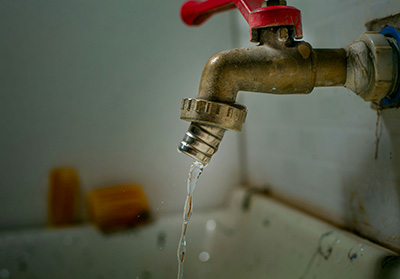Poverty and Income Inequality
The Concurrence of Water and Food Insecurity in 25 Low- and Middle-Income Countries
 Mounting evidence shows that the lack of stable access to food is directly affected by a lack of clean and safe water. In the Bulletin of the World Health Organization, IPR anthropologist Sera Young and her colleagues investigate how water access, use, and stability relate to food insecurity in 25 low- and middle-income countries. The researchers use data from the 2020 World Gallup Poll, which administered the Individual Water Insecurity Experiences Scale and the Food Insecurity Experience Scale to 31,755 respondents. These respondents live in 25 low- and middle-income countries in sub-Saharan Africa, Northern Africa, Asia, and Latin America, and they made up nationally representative samples of each country. The surveys asked questions such as how often the individuals experienced life-disrupting water-related problems or didn’t have enough to eat from the lack of resources in the previous 12 months. The researchers find that among the 18.3% of respondents who experienced water insecurity, 66.8% also experienced food insecurity. Overall, 12.8% of respondents experience water and food insecurity at the same time. The results show that the likelihood of experiencing moderate-to-severe food insecurity was higher among respondents who also experienced water insecurity. Future research should explore the ways water insecurity affects food insecurity and nutritional intake as well as how food insecurity may play a role in exacerbating water insecurity.
Mounting evidence shows that the lack of stable access to food is directly affected by a lack of clean and safe water. In the Bulletin of the World Health Organization, IPR anthropologist Sera Young and her colleagues investigate how water access, use, and stability relate to food insecurity in 25 low- and middle-income countries. The researchers use data from the 2020 World Gallup Poll, which administered the Individual Water Insecurity Experiences Scale and the Food Insecurity Experience Scale to 31,755 respondents. These respondents live in 25 low- and middle-income countries in sub-Saharan Africa, Northern Africa, Asia, and Latin America, and they made up nationally representative samples of each country. The surveys asked questions such as how often the individuals experienced life-disrupting water-related problems or didn’t have enough to eat from the lack of resources in the previous 12 months. The researchers find that among the 18.3% of respondents who experienced water insecurity, 66.8% also experienced food insecurity. Overall, 12.8% of respondents experience water and food insecurity at the same time. The results show that the likelihood of experiencing moderate-to-severe food insecurity was higher among respondents who also experienced water insecurity. Future research should explore the ways water insecurity affects food insecurity and nutritional intake as well as how food insecurity may play a role in exacerbating water insecurity.
Tap Water Avoidance is Connected to Food Insecurity
Food insecurity is a large and growing problem in the United States, and water insecurity may be an overlooked factor that contributes to the lack of reliable access to food. In the Journal of the Academy of Nutrition and Dietetics, Asher Rosinger of Penn State University, assistant research professor Hilary Bethancourt, and IPR anthropologist Sera Young investigate how tap water avoidance, a proxy for water insecurity, is associated with food insecurity in the U.S. Using the National Health and Nutrition Survey (NHANES), a nationally representative sample of the U.S. population, they examined a survey of 31,390 U.S. adults in 2005–06 and 2017–18. The survey asked participants questions about their household food security in the prior year, how often individuals drank tap water, and about their demographic background. The researchers find that adults who avoided tap water had a 21% higher chance of food insecurity compared to those who drank tap water, and the probability of food insecurity doubled from the 2005–06 survey to the 2017–18 survey. They also find that food insecurity decreased across tap water drinkers and avoiders as income rose, but it was higher among tap water avoiders at all income levels. The study highlights how water insecurity and food insecurity—both public health problems—are connected and can occur in the United States, a high-income country. The researchers argue that future research is necessary to understand why people avoid tap water and how water insecurity relates to food insecurity.